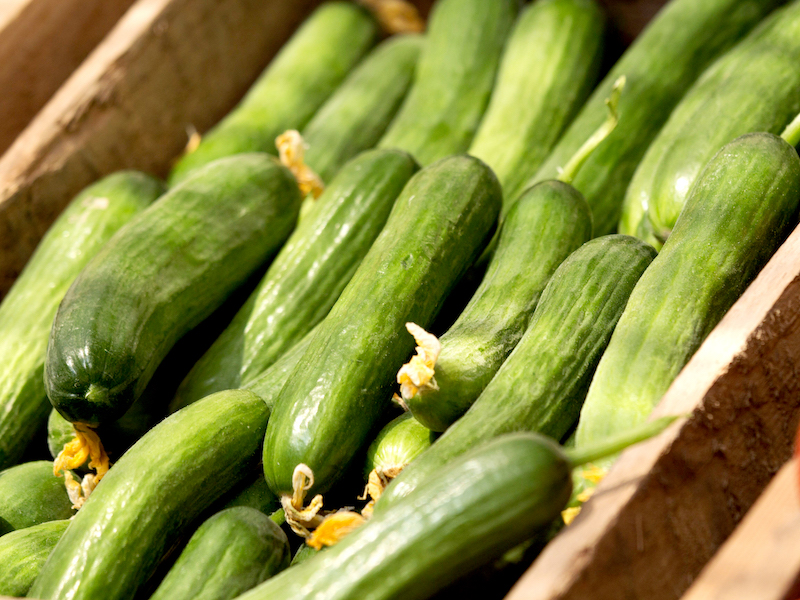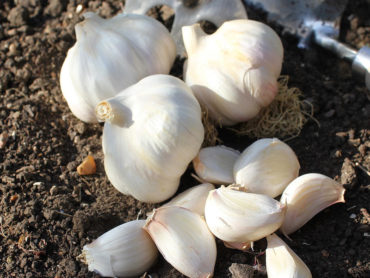Delicious on sandwiches, in salads, pickled, or added to Pimm’s, cucumbers are a traditional summer favourite that’s surprisingly easy to grow at home. Here we take a look at how to sow and grow cucumber seeds in a greenhouse or outside. We also explain how to grow ‘all female’ varieties.
How to grow cucumbers in a heated greenhouse
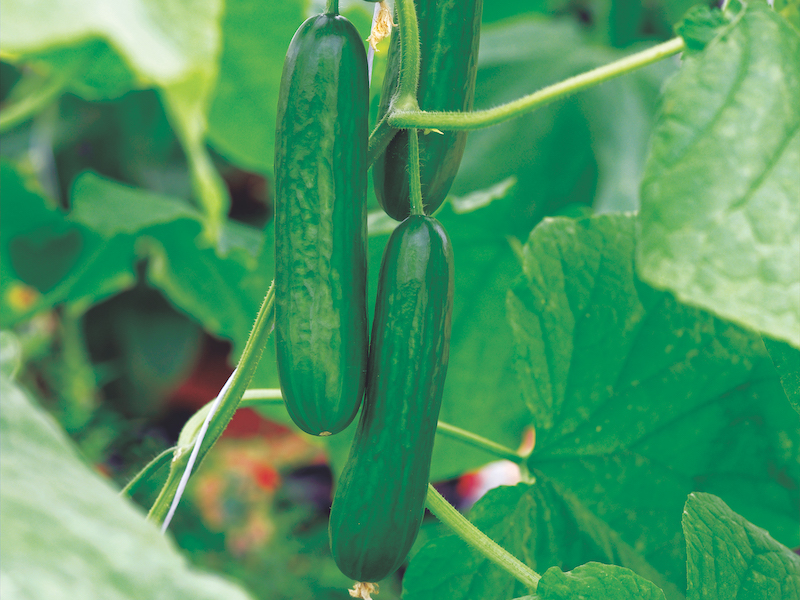
Image: Cucumber (Organic) Seeds ‘Passandra’ F1 from Suttons
Growing cucumbers in a heated greenhouse is a sure-fire way to achieve excellent harvests. Just follow these step-by-step instructions to look forward to lots of crunchy, succulent produce.
- Sow the cucumber seeds
Sow your cucumber seeds singly between February and May in 7.5cm (3in) pots or spaced 2.5cm (1in) apart in boxes or trays. A temperature of 15°C (60°F) is necessary for the ordinary varieties and 21°C (70°F) for the ‘all female’ types. When sowing in 7.5cm pots, some people prefer to fill the pots half way at sowing time, adding more compost as the young plant grows. This avoids the disturbance of re-potting while encouraging healthy growth. - Prick off the seedlings
If sowing into boxes or trays, the seedlings should be pricked off into 7.5cm (3″) pots after seven or eight days. Plant fairly deeply with the seedling’s leaves almost touching the soil surface – this stops the young plants becoming leggy. Avoid completely filling the pot with compost to allow topping-up with suitable compost as the stem grows. - Plant out
About three weeks after sowing, the young plants can be planted out two per grow bag or individually into 25cm (10in) pots. After planting out, a day temperature of between 15°C (60°F) and 21°C (70°F) should be maintained and the night temperature should not be allowed to fall below 15°C (60°F). - Grow on
Train your cucumber plants up towards the roof using strings or canes secured to horizontal wires running the length of your greenhouse. The tips of lateral shoots are usually pinched out after two leaves from the main stem, provided both leaves are showing fruit buds. All male flowers should be removed and also any fruits developing on the main stem itself. It’s easy to tell the difference between male and female flowers – females have a swelling just below the base of the flower which develops into fruit, males don’t.
It’s most important to ensure that the plant receives no ‘check’ to its development so keep the temperature within the suggested parameters, and feed and water regularly. - Thin the fruits
To avoid over-cropping, thin out the fruits in the early stages. Periodical top-dressing with compost around the base of the plant is necessary, especially if young roots are showing. A constant supply of water at the roots is essential and the atmosphere should be kept reasonably moist by overhead spraying. Stagnant conditions must not be allowed to develop. When the first fruits start to swell, feed at fortnightly intervals with a tomato feed.
How to grow cucumbers in an unheated greenhouse
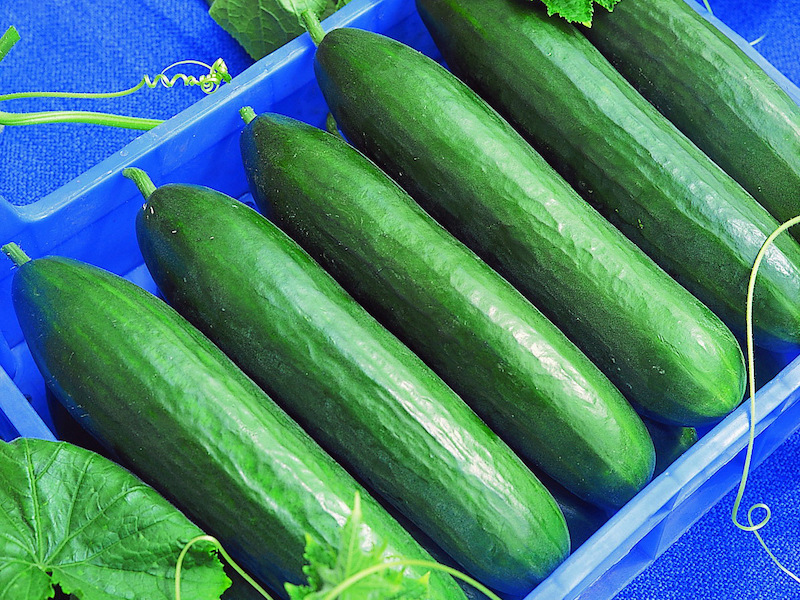
Image: Cucumber (Organic) Seeds – F1 Paska
Most of the greenhouse varieties may be grown under glass without extra heat other than that produced by the sun. If you’re growing cucumbers this way, the growing instructions are the same as they would be if your greenhouse was heated, but you should delay sowing until April or May when conditions are warmer. It may even be preferable to use plants raised in heat and plant them out in April or May in the cold house.
How to grow cucumbers outdoors
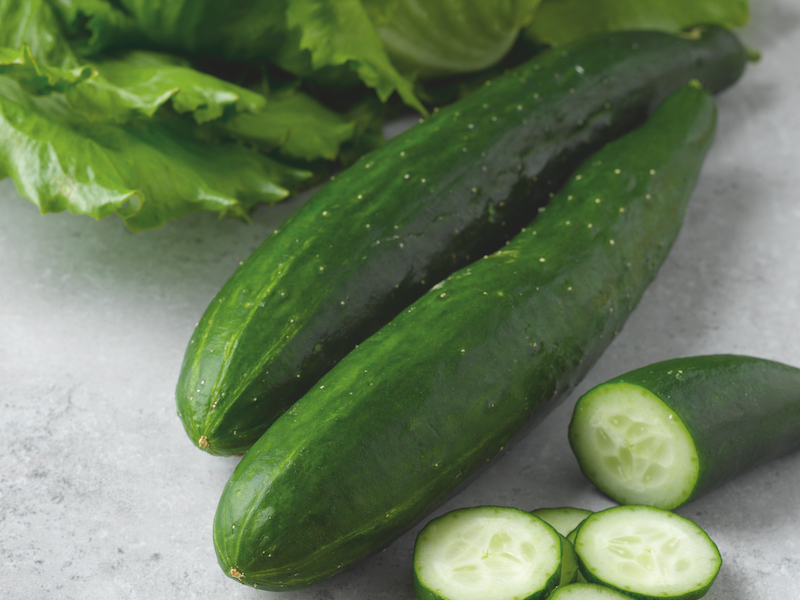
Image: Cucumber Seeds – F1 Burpless Tasty Green from Suttons
If you’re growing cucumbers outside, make sure you choose an outdoor variety. They’re usually more ridged and bumpy than the smoother greenhouse types.
You can sow your cucumber seeds directly into a prepared bed in May. But if you want to get ahead, start them off in a greenhouse or cold frame in mid-April and then plant them out in May when the danger of frost has passed. Sow or plant in rows 90cm (3′) apart each way to allow for the natural trailing habit of the plant. It may be necessary to protect the young plants with a cloche or fleece during cooler weather.
The tips of the shoots should be pinched out when five or six leaves have developed and no further stopping should then be necessary.
How to grow ‘all female’ hybrid cucumbers
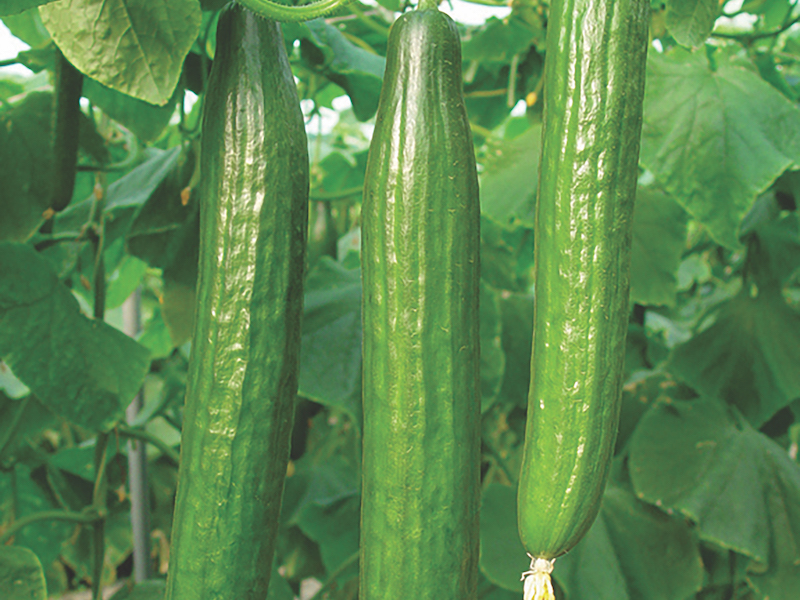
Image: Cucumber (All Female) Seeds – F1 Bella from Suttons
If you want slightly bigger harvests, the most reliable way, without the need to pinch out male flowers, is to opt for an ‘all female’ hybrid cucumber seed. Here’s how to sow and grow hybrid cucumbers.
- Sow the ‘all female’ hybrid seeds
Sow your cucumber seed into boxes at a temperature of 21°C (70°F). Seedlings are ready for potting once they’ve developed two true leaves, usually in a week or so. Pot into 75mm (3″) pots, planting deeply with the seedling’s leaves almost touching the soil. - Plant them out early
Plant your ‘all female’ hybrids into their final growing positions a little earlier than you would with normal varieties. These cucumbers are inclined to produce fruit very early and if you don’t plant them out soon enough, their growth is restricted. - Remove the side shoots
It’s most important to have plants with a strong root system and to stimulate the vegetative growth. Remove all the side shoots from the first six to eight leaf axils of the main stem to prevent premature fruit setting and to encourage growth; it’s important to do this as early as possible. - Trim the laterals
Trim lateral shoots in the early stages of growth by pinching off just the top of the shoots two leaves beyond the flower.
The quality of the fruit obtained from the laterals is much higher and only in the case of very vigorous growth should you leave a few fruits on the main stem in the top of the plant. - Watch the temperature
If vegetative growth becomes too strong to the detriment of fruiting, reduce the night-time temperature to stimulate fruit setting. Provided no other type of cucumber is grown in the vicinity, there’s no problem of cross fertilisation and the production of the bulbous fruits sometimes seen in normal varieties. - What to do when ‘all female’ hybrids produce male blooms
Grown under ideal conditions, ‘all female’ plants will produce only female flowers. Having said that, there are a number of factors which sometimes result in the production of a number of male flowers early in the growing season. These include extremes of temperature (too high or too low), unbalanced feeding and incorrect irrigation. If your plants do produce male blooms, simply remove them and troubleshoot your plants’ growing environment for suboptimal conditions.
With a little planning and attention to detail, cucumbers are very easy to grow both in a greenhouse and outside. Now you’re equipped with all the knowhow you need to make a success of growing your own delicious fruit, all that remains is to choose your favourite varieties. Don’t have time to grow from seed? Stock up on cucumber plants instead.
Lead image: Cucumber Seeds ‘Mini Muncher’ from Suttons
Last Updated on February 11, 2025 by Suttons Horticultural Team

